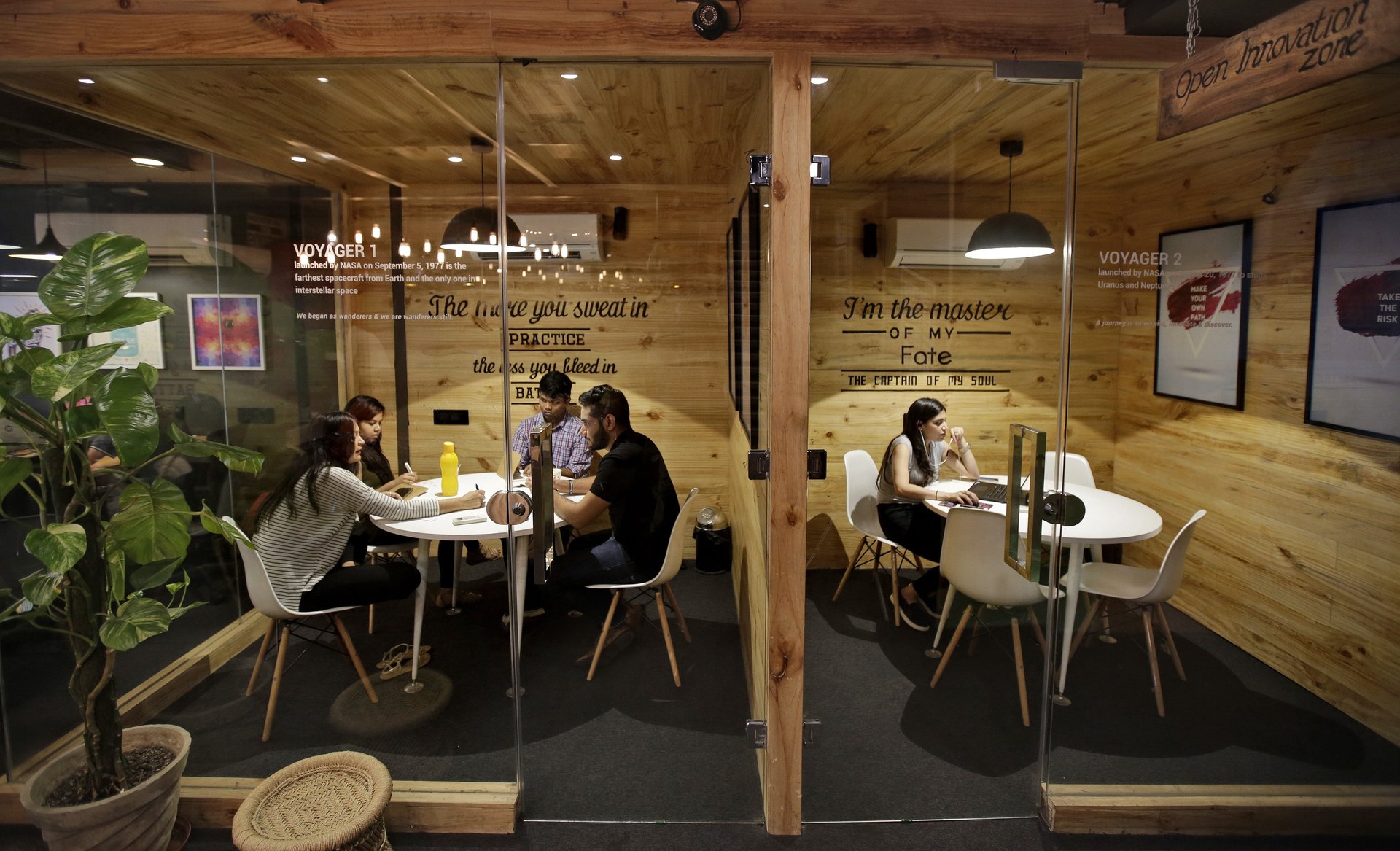The future of work in India is funky co-working spaces, not stuffy offices
A thriving startup ecosystem, costly commercial real estate, and increasing acceptance of unconventional offices are spurring the demand for co-working spaces in India.


A thriving startup ecosystem, costly commercial real estate, and increasing acceptance of unconventional offices are spurring the demand for co-working spaces in India.
By the end of 2017, such facilities will increase by between 40% and 50% to reach a million square feet in India, according to a report by real-estate consultancy JLL and New York-based co-working company WeWork. And by 2020, the number of these “branded” co-working spaces will grow four-fold to 400 centres.
Co-working spaces typically work on a leasing model, where a provider rents out desks on an hourly basis. Monthly membership fees vary between Rs3,000 and Rs10,000 for a desk, making them particularly attractive for small firms looking to save money.
A seat in co-working spaces costs anywhere between a half to one-third of that in a conventional setup, the report says. In fact, in Mumbai, Delhi, and Pune, they are at least 20% cheaper. Which explains why most of them are packed—companies that JLL spoke to were running at 85% occupancy—helping providers typically break-even in a short span of five months.
Unsurprisingly, startups and investors have already begun capitalising on the opportunity. For instance, earlier this year, Awfis Space Solutions raised $20 million backed by Sequoia capital. New York-based WeWork made its India debut earlier this year in Bengaluru, offering 2,000 desks. By 2018, JLL estimates, India’s co-working market could receive $400 million in investments.
Future of work
India’s young and growing workforce has a lot to do with this success.
“With millennials driving the workforce and the growing need to build communities, co-working spaces are shaping the future of work,” said Ramesh Nayar, chief executive at JLL India. The firm estimates that this demography is expected to generate demand for between 12 and 14 million seats over the next few years.
And it isn’t just startups driving the growth. The report suggests that corporate enterprises will continue to form a major chunk of demand in the segment, followed by small businesses.